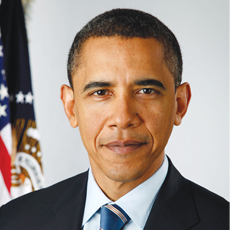
The White House’s proposed 2015 budget includes sharp cuts to skilled nursing facility reimbursements, which has drawn strong criticism from the nation’s largest long-term care provider group.
To cut federal spending on healthcare by $402 billion over the next 10 years, the White House seeks to “encourage efficient post-acute care by adjusting payment updates for certain post-acute providers,” according to the budget document released Tuesday. Those adjustments would include an “accelerated schedule” for reducing skilled nursing facility Medicare market basket updates. This would start with a 2.5% reduction in 2015, then taper to a less severe 0.97% update by 2022.
Overall, post-acute payments adjustments would equal about $98 billion in savings through 2024, the Office of Management and Budget estimates.
In addition to those general payment adjustments, the spending plan calls for equalizing payments to skilled nursing facilities and inpatient rehabilitation facilities for certain services, and adjusting SNF payments to reduce hospital readmissions.
Last year’s White House budget included similar proposals, but this year’s SNF market basket proposals are “much more aggressive,” Avalere Health vice president Ellen Lukens and manager Sarah Snyder told McKnight’s. Another new provision is a call for SNFs to undertake value-based purchasing, they noted. This would be budget-neutral, meaning it would not have any effect on the federal deficit, according to the calculations in the budget.
The American Health Care Association/National Center for Assisted Living — the nation’s largest provider group — slammed the proposed Medicare reductions, noting that the sector has “endured billions in cuts” in recent years. However, the association supports proposals that could achieve savings without slashing reimbursements, such as penalizing SNFs that have high hospital readmissions rates.
“We have a proposal on Capitol Hill that would do just that, saving Medicare nearly $2 billion while improving health outcomes,” noted AHCA/NCAL President and CEO Mark Parkinson.
LeadingAge, the association representing not-for-profit providers, also stated that cuts are not the answer.
“We will work with the White House, Congress and other policymakers on common-sense reforms that should be pursued instead of further across-the-board cuts in Medicare reimbursement,” said Cheryl Phillips, M.D., LeadingAge senior vice president of public policy and advocacy.
The president’s version of a 2015 budget includes $3.9 trillion in spending. This is well above the roughly $1 trillion cap agreed to in a hard-won bipartisan budget agreement in December, which set spending levels through 2015. The existence of that deal, coupled with ongoing partisan gridlock, means the president’s budget almost certainly is symbolic, according to many pundits and administration critics.
Rep. Paul Ryan (R-WI) said the budget is a “campaign brochure” that panders to Obama’s Democratic base. For example, the White House dropped the cuts to Social Security offered in last year’s budget, which were favored by some Republicans, and included tax provisions that would hit millionaires’ pocketbooks.
Ryan, chairman of the House Budget Committee, has said he will release a 2015 budget next month.
The Senate Democrats will not release a budget proposal separate from the plan already in place, according to Sen. Patty Murray (D-WA), chairwoman of the budget committee in that chamber. However, she expressed support for the priorities laid out by the White House.




